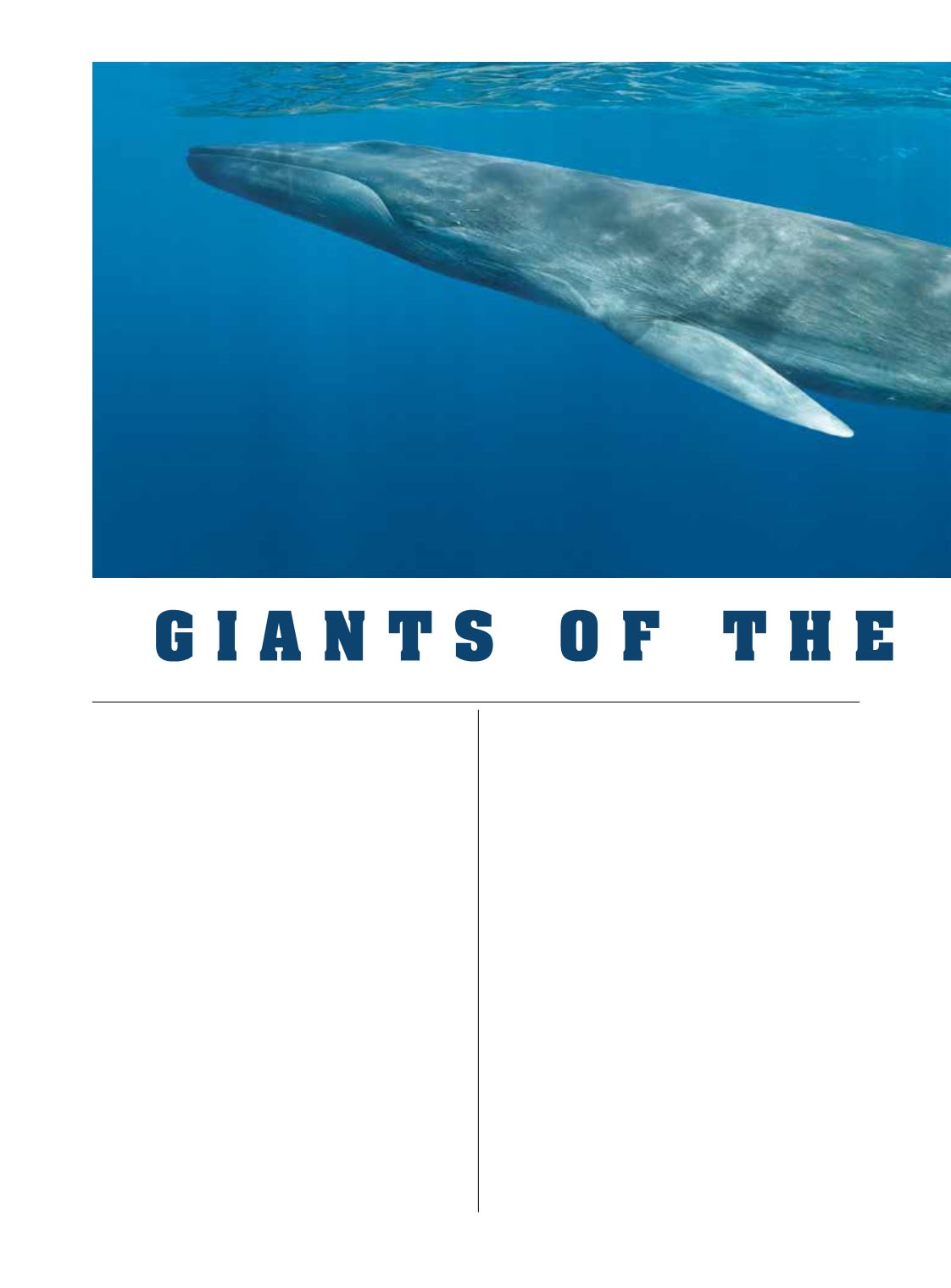

78
|
SPRING 2016
S
trapped into the bow of a
small inflatable boat, holding
a crossbow and scanning
the water intently, Simone
Panigada, Ph.D., was patrolling
the coast of Lampedusa, a
small Italian island. A sudden
flash of reflected sunlight
alerted him to something on
the surface just ahead. He
signaled Giancarlo Lauriano at the helm, and the boat
lurched forward, racing at full speed. Panigada raised his
crossbow and fired.
The projectile arced across the water, striking its
target with two sharpened points that buried into flesh,
securing a barnacle-sized packet of electronics to the
dorsal fin of a fin whale. The Low Impact Minimally
Percutaneous Electronic Transmitter (LIMPET) tag
would attempt to contact an Argos satellite every time
the whale surfaced, transmitting the animal’s position
for the next six weeks.
Almost simultaneously, Nino Pierantonio, Panigada’s
colleague at the Milan-based Tethys Research Institute,
fired another crossbow, which launched a hollow-
tipped arrow at the whale’s flank. The arrow struck the
whale and then fell into the water, cradling a small plug
of skin and blubber for analysis of DNA and toxins.
The whale reacted to both insults with a small twitch,
as if stung by a mosquito, and returned to its business.
That business was the ingestion of massive
quantities of krill, which were swarming in sufficient
density to stain the blue surface water a startling pink.
The krill, normally found hundreds of feet deep, were
feeding at the surface due to massive upwellings that
bring cold nutrient-rich water to the surface around
Lampedusa during the first few months of each year.
The upwellings result from the interaction of deep
currents with dramatic bottom topography.
Fin whales have been known to inhabit the northern
Mediterranean during the summer since ancient times
— Romans referred to Italy’s Ligurian (northwestern)
coast as the “coast of whales”— but rumors of winter
feeding aggregations around Lampedusa (in the
southern Mediterranean) were not confirmed until 2004.
Researchers found that the whales not only were feeding
out of season but were doing so right at the surface and


















